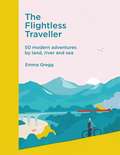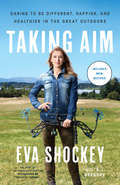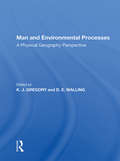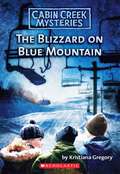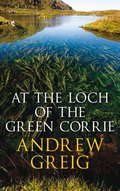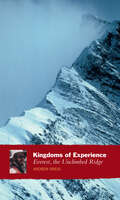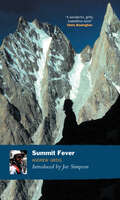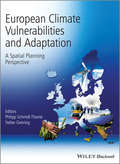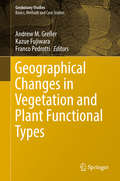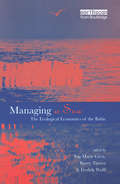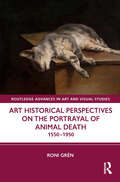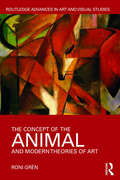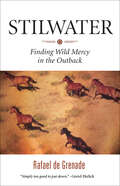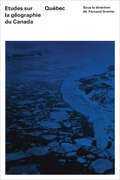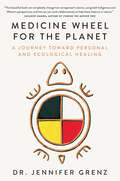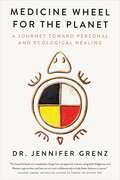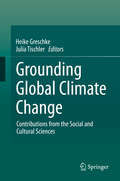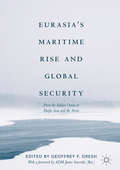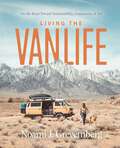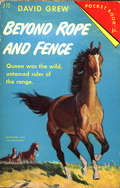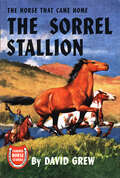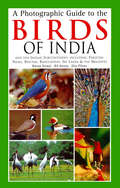- Table View
- List View
The Flightless Traveller: 50 modern adventures by land, river and sea
by Emma GreggDiscover how to explore our beautiful world sustainably and responsibly with this trailblazing guide to flight-free travel. Seeking options that are enjoyable and kind to the planet, award-winning travel writer Emma Gregg shows you how to get a no-fly holiday off the ground.The Flightless Traveller presents 50 inspirational, life-affirming trip ideas for those who would like to fly less, or not at all. They include eco-friendly city breaks and coastal retreats, bike rides and sailing voyages, short jaunts on vintage railways and incredible intercontinental journeys.Some shed new light on wonderful, well-known places. Others reveal destinations, activities and experiences you might have never considered before. Best of all, they make the journey an essential part of the adventure.Get ready to recapture the authentic spirit of travel as you plan your next trip by land, river or sea.
Taking Aim: Daring to Be Different, Happier, and Healthier in the Great Outdoors
by A. J. Gregory Eva ShockeyAn acclaimed bow hunter who defies the stereotype that hunting is a man’s game, Eva Shockey is a TV and social media phenomenon at the forefront of a new wave of women and girls who are passionate about outdoor sports. Eva Shockey grew up expecting to be a dancer like her glamorous mother. But something about spending family vacations RV-ing across North America and going on hunts with her dad sparked in her an enduring passion for a different way of life. In Taking Aim, Eva tells a very personal story of choosing the less-traveled path to a rewarding life in outdoor pursuits like hunting and fishing. For her, as her millions of fans can attest, that has meant hunting as a way of harvesting food, caring deeply about conservation, sustainability and healthy eating, and getting closer to God in nature. In this riveting memoir for the adventurer in all of us, Eva takes readers along as she hunts caribou on the rugged Aleutian Islands, tracks a 1,500-pound bull moose across the unforgiving Yukon, and meets many other challenges of a life in the wild. Along the way we learn that hunting is about so much more than pulling a trigger. "My story is about discovering your dream," writes Eva. "It's about following your passion, mastering your skills, taking aim no matter who thinks you’re crazy…and then letting the arrow fly. If you’ve done all you can, I can tell you that you’re almost certain to hit your mark." Whether you’re a lifelong hunter or a city dweller who has never set foot in the wilderness, Eva’s story delivers an empowering message about rejecting stereotypes and expectations, believing in yourself, and finding the courage to pursue what you care about most.
Man And Environmental Processes: A Physical Geography Perspective (Studies In Physical Geography)
by K. J. GregoryThe aim of the present volume is to review the effects of human activity on physical environment processes, and this is justified not only as a complement to the approach taken by G. P. Marsh his volume Man and Nature (1864), but also as a sequel to the work produced since 1864, with contributions since the mid-nineteenth century to the study of th
The Blizzard on Blue Mountain (Cabin Creek Mysteries)
by Kristiana GregoryIn Cabin Creek, winter means sledding, ice skating, snow boarding and a broken ski lift? A blizzard has blown into town and tourists are filling up the lodge to hit the slopes, which means there are all the more suspects in the cousins' latest case.
At the Loch of the Green Corrie
by Andrew GreigA homage to a remarkable poet and his world.'At The Loch of Green Corrie is more than merely elegant, more than a collection of albeit fascinating insights, laugh-out-loud observations and impressively broad erudition' - Sunday Herald'You could easily make a case that Andrew Greig has the greatest range of any living Scottish writer' - ScotsmanFor many years Andrew Greig saw the poet Norman MacCaig as a father figure. Months before his death, MacCaig's enigmatic final request to Greig was that he fish for him at the Loch of the Green Corrie; the location, even the real name of his destination was more mysterious still. His search took in days of outdoor living, meetings, and fishing with friends in the remote hill lochs of far North-West Scotland. It led, finally, to the waters of the Green Corrie, which would come to reflect Greig's own life, his thoughts on poetry, geology and land ownership in the Highlands and the ambiguous roles of whisky, love and male friendship. At the Loch of the Green Corrie is a richly atmospheric narrative, a celebration of losing and recovering oneself in a unique landscape, the consideration of a particular culture, and a homage to a remarkable poet and his world.
At the Loch of the Green Corrie
by Andrew GreigA homage to a remarkable poet and his world.'At The Loch of Green Corrie is more than merely elegant, more than a collection of albeit fascinating insights, laugh-out-loud observations and impressively broad erudition' - Sunday Herald'You could easily make a case that Andrew Greig has the greatest range of any living Scottish writer' - ScotsmanFor many years Andrew Greig saw the poet Norman MacCaig as a father figure. Months before his death, MacCaig's enigmatic final request to Greig was that he fish for him at the Loch of the Green Corrie; the location, even the real name of his destination was more mysterious still. His search took in days of outdoor living, meetings, and fishing with friends in the remote hill lochs of far North-West Scotland. It led, finally, to the waters of the Green Corrie, which would come to reflect Greig's own life, his thoughts on poetry, geology and land ownership in the Highlands and the ambiguous roles of whisky, love and male friendship. At the Loch of the Green Corrie is a richly atmospheric narrative, a celebration of losing and recovering oneself in a unique landscape, the consideration of a particular culture, and a homage to a remarkable poet and his world.
Kingdoms of Experience: Everest, the Unclimbed Ridge
by Andrew GreigIn March 1985, Mal Duff led a new expedition to conquer Everest by the unclimbed north-east ridge.The last attempt by a Chris Bonington team had ended in failure and tragedy - with the deaths of two great climbers, Joe Tasker and Pete Boardman.Everyone knew the risks as well as the excitement of the challenge. In this extraordinary book, Greig chronicles not only the assault on the peak but also the complex inter-relationships of nineteen very different personalities living together.
Summit Fever
by Andrew GreigWhen poet Andrew Greig was asked by Scottish mountaineer Mal Duff to join his ascent of the Mustagh Tower in the Karakoram Himalayas, he had a poor head for heights and no climbing experience whatsoever. The result is this unique book.Summit Fever has been loved by climbers and literary critics alike for its refreshing candour, wit, insight and the haunting beauty of its writing.Much more than a book about climbing, it celebrates the risk, joy and adventure of being alive.
European Climate Vulnerabilities and Adaptation
by Stefan Greiving Philipp Schmidt-ThomeEuropean Climate Vulnerabilities and Adaptation: A Spatial Planning Perspective analyses the impacts climate change might have on regions and their local economies. Regions clearly differ in view of the complex patterns of climate change impact, but also regarding the given vulnerability and coping capacity.Impacts of climate change can have a marked effect on the functioning of regions and sectors of the society, if not properly addressed. Readiness to adapt to the impacts and lasting changes counts towards vulnerability of the regions.The book builds upon the findings of a project conducted under the European observation network for territorial development and cohesion (ESPON), The ESPON Climate project. Following the stipulations of the ESPON programme and the tender for this project the territorial focus is the raison d'être and methodological core of the project as a whole and its various research actions: The outcomes of each action will be focused on what impacts global climate change will have for the different European regions and how the regions can cope with the projected impacts in order to become less vulnerable to climate change.This book: Provides a comprehensive analysis of climate change impacts on 29 European regions and their local economiesTakes an interdisciplinary approach dealing with the physical, social, economic, environmental, cultural and institutional aspects of climate change vulnerability and the consequences for spatial planningBuilds on the findings of the ESPON Climate project with a policy focused approachIs in full colour throughout with a broad range of case studies
Geographical Changes in Vegetation and Plant Functional Types (Geobotany Studies)
by Andrew M. Greller Kazue Fujiwara Franco PedrottiThis book presents studies on current vegetation topics, from polar to tropical regions. It is a festschrift to mark the 70th birthday of Prof. Elgene O. Box, who has studied vegetation all over the world, both through fieldwork and modeling. It reflects a number of his interests, including basic ecological plant forms (cf ‘plant functional types’), temperate-zone forests, and evergreen versus seasonal patterns. Section 1 discusses the concept of vegetation series, while Section 2 has two global-scale chapters on plant functional traits and whether they are related more to climate or phylogeny. Section 3 has nine chapters focusing on vegetation history, regional vegetation, and how these have influenced current species organizations and distributions. Regions treated include Russia, China, the USA, Mexico and Mediterranean areas. Lastly, Section 4 addresses aspects of vegetation change and plant ecology. Every chapter in this unique book offers original ideas on the topic of vegetation, as the authors are assembled from a world-wide population of leading vegetational ecologists, whose interests range from local communities to global theoretical questions.
Managing a Sea: The Ecological Economics of the Baltic
by Ing-Marie Gren R. Kerry Turner Frederick WulffMarine resources and fish stocks are now high on the international and economic research agendas, and the management of highly complex marine ecosystems is increasingly important. The task is complicated by the number of interlinked factors to be taken into account, such as social impacts, drainage systems, marine currents and the ecosystems involved. This interdisciplinary volume presents a comprehensive blueprint for managing a sea. Focused on the Baltic Sea, it employs a range of methods and techniques, including nutrient budgets and simulation models, Geographical Information Systems (GIS), economic valuation and policy analysis, to arrive at an assessment of causes and consequences of pollution in the sea and the management of its resources. From the analysis of data on land use, population, costs of nutrient reductions and associated impacts, it presents significant and highly practical empirical and policy results. It diagnoses the causes of marine degradation, identifies through the use of simulation models cost-effective strategies for remediation and sets out the policies to be pursued collectively by the countries around the sea to restore and manage their common resource. This is an exemplary study in the application of ecological economics to complex natural resource systems. It will be of interest to students, researchers and professionals working on any aspect of marine ecosystem management.
Art Historical Perspectives on the Portrayal of Animal Death: 1550–1950 (Routledge Advances in Art and Visual Studies)
by Roni GrénThis study concentrates on the discourses around animal death in arts and the ways they changed over time.Chapter topics span from religious symbolism to natural history cabinets, from hunting laws to animal rights, from economic history to formalist views on art. In other words, the book asks why artists have represented animal death in visual culture, maintaining that the practice has, through the whole era, been a crucial part of the understanding of our relation to the world and our identity as humans. This is the first truly integrative book-length examination of the depiction of dead animals in Western art.The book will be of interest to scholars working in art history, animal studies, and cultural history.
The Concept of the Animal and Modern Theories of Art (Routledge Advances in Art and Visual Studies)
by Roni GrénThis book examines the importance of the animal in modern art theory, using classic texts of modern aesthetics and texts written by modern artists to explore the influence of the human-animal relationship on nineteenth and twentieth century artists and art theorists. The book is unique due to its focus on the concept of the animal, rather than on images of animals, and it aims towards a theoretical account of the connections between the notions of art and animality in the modern age. Roni Grén’s book spans various disciplines, such as art theory, art history, animal studies, modernism, postmodernism, posthumanism, philosophy, and aesthetics.
Stilwater: Finding Wild Mercy in the Outback
by Rafael De GrenadeRafael de Grenade was twelve years old when she quit school and soon began to work on a rough-country mountain ranch in Arizona. There she learned how to sleep out when there was no fast way home; how to track her way by familiar spires and rivers; how to survive off the water that seeped from moss hidden in the valleys. But when she read about cattlemen working the far edges of the Australian outback, they sparked a dream in her far wilder than anything she had ever known. A little over a decade later she arrived on Stilwater Station with two shirts, two pairs of jeans, cowboy boots, and some doubt that she would ever come home. One thousand square miles of costal scrub-inundated by monsoon floods in the winter, baked dry in the summer, and filled with the most deadly animals in the world-Stilwater seems an unlikely home for a cattle operation. But in the countless miles beyond the station compound roam tens of thousands of cows, many entirely feral from a long period of neglect. Rafael has been hired, along with a ragged crew of ringers and stockmen, to bring them in for drafting. Over a season they use helicopters, motorcycles, bullcatcher jeeps, horses, ropes, and knives to win Stilwater Station back from the wild, to say nothing of their intuition, strength, muscle and wit. A deeply poetic inquiry into our desire to make order where we find wildness, Stilwater: Finding Wild Mercy in the Outback suffuses us with salt and scrub and blood, blurring the line between domestic and feral in wondrous, unsettling ways. This is a whirlwind of men, women, cattle, horses, machines and landscape in collaborative evolution, all becoming different manifestations of the same entity-the Australian Wild.
Etudes sur la Geographie du Canada
by Fernand GrenierThe publication of the series, 'Studies in Canadian Geography,' by the organizers of the 22nd International Geographical Congress, introduces to the international community of geographers a new perspective of the regional entities which form this vast countries. These studies should contribute to a better understanding among scholars, students, and the people of Canada of the geography of their land. Geographical works embracing the whole of Canada, few in number until recently, have become more numerous during the last few years. This series is original in its purpose of re-evaluating the regional geography of Canada. In the hope of discovering the dynamic trends and the processes responsible for them, the editors and authors of these volumes have sought to interpret the main characteristics and unique attributes of the various regions, rather than follow a strictly inventorial approach. In preparing this volume on Quebec, the contributors have looked at the evolution and present patterns of the ecumene of southern Québec, rural and urban Québec, and the dynamic biogeography of Québec.
Medicine Wheel for the Planet: A Journey toward Personal and Ecological Healing
by Dr. Jennifer Grenz"This beautiful book can completely change how we approach science, using both Indigenous and Western perspectives, and how we can work collaboratively to help foster balance in nature." —Suzanne Simard, bestselling author of Finding the Mother TreeA farm kid at heart, and a Nlaka'pamux woman of mixed ancestry, Dr. Jennifer Grenz always felt a deep connection to the land. However, after nearly two decades of working as a restoration ecologist in the Pacific Northwest, she became frustrated that despite the best efforts of her colleagues and numerous volunteers, they weren't making the meaningful change needed for plant, animal and human communities to adapt to a warming climate. Restoration ecology is grounded in an idea that we must return the natural world to an untouched, pristine state, placing humans in a godlike role—a notion at odds with Indigenous histories of purposeful, reciprocal interaction with the environment. This disconnect sent Dr. Grenz on a personal journey of joining her head (Western science) and her heart (Indigenous worldview) to find a truer path toward ecological healing.In Medicine Wheel for the Planet, building on sacred stories, field observations and her own journey, Dr. Grenz invites readers to share in the teachings of the four directions of the medicine wheel: the North, which draws upon the knowledge and wisdom of elders; the East, where we let go of colonial narratives and see with fresh eyes; the South, where we apply new-old worldviews to envision a way forward; and the West, where a relational approach to land reconciliation is realized. Eloquent, inspiring and disruptive, Medicine Wheel for the Planet circles toward an argument that we need more than a singular worldview to protect the planet and make the significant changes we are running out of time for.
Medicine Wheel for the Planet: A Journey Toward Personal and Ecological Healing
by Jennifer GrenzA personal journey of bringing together Western science and Indigenous ecology to transform our understanding of the human role in healing our planetI used to be an ecologist. . . . Now, I am a community gatherer, working to help bring healing beyond just the land. I am a story-listener. I am a storyteller. I am a shaper of ecosystems. I work on bringing communities together, in circle, to listen to each other. A farm kid at heart, and a Nlaka&’pamux woman of mixed ancestry, Dr. Jennifer Grenz always felt a deep connection to the land. However, after nearly two decades of working as a restoration ecologist in the Pacific Northwest, she became frustrated that despite the best efforts of her colleagues and numerous volunteers, they weren&’t making the meaningful change needed for plant, animal, and human communities to adapt to a warming climate. Restoration ecology is grounded in an idea that we must return the natural world to an untouched, pristine state, placing humans in a godlike role—a notion at odds with Indigenous histories of purposeful, reciprocal interaction with the environment. This disconnect sent Dr. Grenz on a personal journey of joining her head (Western science) and her heart (Indigenous worldview) to find a truer path toward ecological healing. In Medicine Wheel for the Planet, building on sacred stories, field observations, and her own journey, Dr. Grenz invites readers to share in the teachings of the four directions of the medicine wheel: the North, which draws upon the knowledge and wisdom of elders; the East, where we let go of colonial narratives and see with fresh eyes; the South, where we apply new-old worldviews to envision a way forward; and the West, where a relational approach to land reconciliation is realized. Eloquent, inspiring, and disruptive, Medicine Wheel for the Planet circles around an argument that we need more than a singular worldview to protect the planet and make the significant changes we are running out of time for.
Grounding Global Climate Change
by Heike Greschke Julia TischlerThis book traces the evolution of climate change research, which, long dominated by the natural sciences, now sees greater involvement with disciplines studying the socio-cultural implications of change. In their introduction, the editors chart the changing role of the social and cultural sciences, delineating three strands of research: socio-critical approaches which connect climate change to a call for cultural or systemic change; a mitigation and adaption strand which takes the physical reality of climate change as a starting point, and focuses on the concerns of climate change-affected communities and their participation in political action; and finally, culture-sensitive research which places emphasis on indigenous peoples, who contribute the least to the causes of climate change, who are affected most by its consequences, and who have the least leverage to influence a solution. Part I of the book explores interdisciplinarity, climate research and the role of the social sciences, including the concept of ecological novelty, an assessment of progress since the first Rio climate conference, and a 'global village' case study from Portugal. Part II surveys ethnographic perspectives in the search for social facts of global climate change, including climate and mobility in the West African Sahel, and human-non human interactions and climate change in the Canadian Subarctic. Part III shows how collaborative and comparative ethnographies can spin "global webs of local knowledge," describing case studies of changing seasonality in Labrador and of rising water levels in the Chesapeake Bay. These perspectives are subjected to often-amusing, always incisive analysis in a concluding chapter entitled "You Ain't Seen Nothing Yet: a death-defying look at the future of the climate debate. " The contributors engage critically with the research subject of 'climate change' itself, reflecting on their own practices of knowledge production and epistemological presuppositions. Finely detailed and sympathetic to a broad range of viewpoints, the book sets out a profile for the social sciences and humanities in the climate change field by systematically exploring methodological and theoretical challenges and approaches.
Eurasia’s Maritime Rise and Global Security: From The Indian Ocean To Pacific Asia And The Arctic (Palgrave Studies in Maritime Politics and Security)
by Geoffrey F. GreshThis book explores Eurasia’s growing embrace of its maritime geography from the Indian Ocean to Pacific Asia and the Arctic. In an age of climate change, the melting of the Arctic will transform Eurasia’s importance, in addition to influencing the political, economic, and military dynamics across Eurasia’s main maritime regions. These emerging shifts have already begun to alter maritime trade and investment patterns, and thus the global political economy. It also creates a rising threat to the current status quo of world order that has long been dominated by the Atlantic World. This edited volume showcases some of the world’s leading experts and examines Eurasia from a saltwater perspective, analyzing its main maritime spaces in a threefold manner—as avenue, as arena, as source—to show the significance of this geostrategic change and why it matters for the future of the world’s oceans.
Living the Vanlife: On the Road Toward Sustainability, Community, and Joy
by Noami GrevembergDiscover what it&’s really like to live and work full-time on the road in a camper van from eco-vanlifer and founder of the Diversify Vanlife movement, Noami Grevemberg.Feeling dissatisfied with her office job and her &“stationary home,&” in 2016 Noami Grevemberg took a bold step. She quit her job, sold her belongings, and set out in her 1985 VW Vanagon to pursue a life of simplicity and travel with her husband and German Shepherd by her side. In her years living fulltime on the road, Noami has become an expert in the many aspects of vanlife. In her book Living the Vanlife, she digs into all aspects of the lifestyle, from getting over the uncomfortable feeling of uncertainty, to creating a sustainable, thriving life of adventure and a captivating path of choosing whatever it is you truly want for yourself. Through personal stories and actionable advice, Noami candidly and compassionately demonstrates for readers that challenging the "status quo&” means taking bold steps, venturing out of your comfort zone, taking risks, and living intentionally. As a Trinidadian immigrant, Noami also takes a practical look at life on the road as a BIPOC navigating many intersections and speaks to topics like converting a van to fit your specific needs, budgeting for vanlife, finding employment, staying safe, and building a supportive community on the road. Featuring evocative full-color photographs of Noami&’s journey, Living the Vanlife is an inclusive and celebratory look at an increasingly popular way of life.
Beyond Rope and Fence (Famous Horse Stories)
by David GrewA black-maned buckskin like her mother, Queen was born on the open prairie, and early learned to fear the very sight and smell of men. As she grew to maturity, Queen became a wise and crafty leader of the wild band, leading it north whenever she saw men on the horizon. Caught at last, and apparently tamed, Queen waited only the chance to rejoin her mate and the herd on the free, open ranges she loved.
The Sorrel Stallion: The Horse That Came Home (Famous Horse Stories)
by David GrewHere is the story of an American "Black Beauty." Instead of the English countryside and London streets, we have the Idaho range country and timberlands for the background of this western stallion's adventures. Sorrel, named for his color, is born in the spring on the great range that borders the Clearwater. His first contact with man is pleasant enough, but all too soon he is captured, to escape with Pinto, his mate, to roam the range wild and free as the wind that sweeps down from the snow-capped mountains. But the day comes when Sorrel is recaptured and his gallant spirit almost broken to the saddle and the plow. Stolen by prospectors who sell him to the Forest Rangers, Sorrel endures long years of exciting adventure and grueling toil with the Rangers. During a terrible forest fire, Sorrel, now old and broken, makes his way south through the Clearwater Canyon, and back to the ranch he fled from but never forgot, there to live in comfort for the rest of his days.
A Photographic Guide to the Birds of India
by Bikram GrewalPeriplus is proud to present the first comprehensive photographic guide to the birds of the Indian subcontinent. This ebook offers over 800 species and distinct sub-species and contains over 1,000 full-color photographs. Each species has a distribution map. Many of the photographs in this magnificent volume appear for the first time and have been carefully selected to show the most important features of the species illustrated. In several cases, different plumages or flight shots are included. The concise text provided vital information on the plumages, voice and habits of each species covered and includes new information. Over a hundred related species are also mentioned in the texts. The maps are accompanied by a note on the status and distribution. This ebook will enable accurate field identification in one of the world's most diverse avifaunal regions. Indispensable reading for all bird lovers.
A Photographic Guide to the Birds of India
by Bikram GrewalPeriplus is proud to present the first comprehensive photographic guide to the birds of the Indian subcontinent. This ebook offers over 800 species and distinct sub-species and contains over 1,000 full-color photographs. Each species has a distribution map. Many of the photographs in this magnificent volume appear for the first time and have been carefully selected to show the most important features of the species illustrated. In several cases, different plumages or flight shots are included. The concise text provided vital information on the plumages, voice and habits of each species covered and includes new information. Over a hundred related species are also mentioned in the texts. The maps are accompanied by a note on the status and distribution. This ebook will enable accurate field identification in one of the world's most diverse avifaunal regions. Indispensable reading for all bird lovers.
A Photographic Guide to the BIRDS OF INDIA
by Bikram Grewal Bill Harvey Otto PfisterThis guide covers 800 species found in India. Each species description is illustrated with a photograph and distribution map, making this a quick-reference guide in a pocketable format. Introductory sections include general information, such as the biogeography of the region covered.
